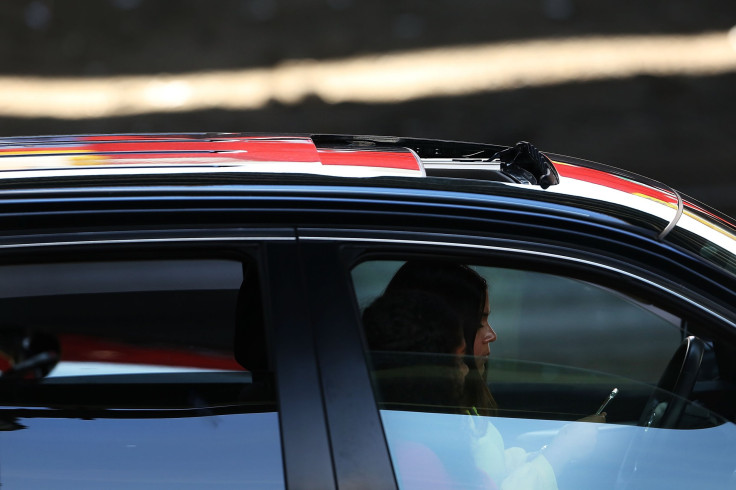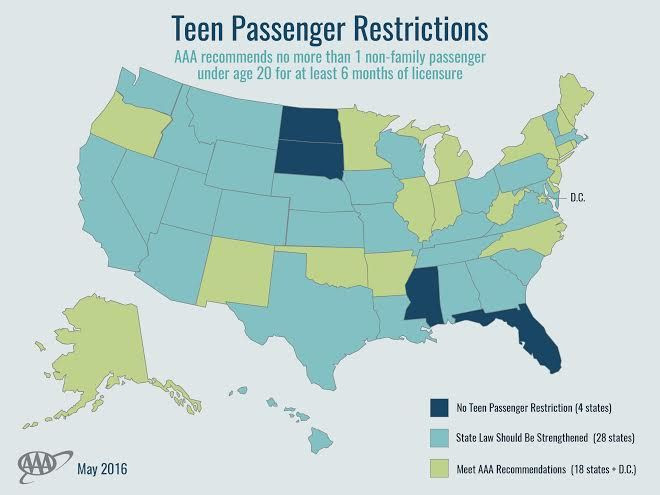Distractions Behind The Wheel Are Number One Cause Of Car Crashes Among Teen Drivers

Teens have the highest car crash rate of any group in the nation. Though this comes as no surprise to anyone, what is troubling is that the majority of teen car crashes could be preventable. Nearly 60 percent of teen accidents result from a variety of driving distractions, a new report finds. Apparently, teen drivers are not only texting but also posting to social media while behind the wheel, say the AAA Foundation researchers.
“Between 2007 and 2015, an average of 58.5 percent of crashes contained some type of potentially distracting behavior during the six seconds leading up to a crash,” concluded the researchers. The most common distractions were focusing on passengers (nearly 15 percent), cell phone use (almost 12 percent), and concentrating on something inside the vehicle (about 11 percent).
Summer Daze
Experienced drivers readily admit to, at least on occasion, talking with their passengers, adjusting the radio, eating or drinking, speaking on a cell phone, or reading or sending a text or email. That mature adults do this is scary enough, but the thought of inexperienced teenagers doing the same strikes true fear in the heart. After all, the “100 Deadliest Days” have arrived.
Historically, deaths caused by teen drivers increase during the period beginning on Memorial Day and ending just shy of Labor Day. For the past five years, an average of 1,022 people per year have died during these 100 days of summer. That adds up to 16 percent more deaths per day than on any other days of the year.
In light of these Deadly Days, AAA Foundation, a not-for-profit organization dedicated to saving lives by preventing traffic crashes, designed a study to examine car accidents involving drivers between the ages of 16 and 19. The research focused on participants in a driving program that made use of the Lytx DriveCam system.
A Natural Record of Car Accidents
The DriveCam system records video, audio, and accelerometer data when a crash or other high G-force event (such as hard braking, acceleration, or impact) is detected. Unlike traffic cameras or police records, then, the DriveCam system presents a natural account of exactly what happened in the car before a crash occurred. For the study, the researchers analyzed a total of 2,229 moderate-to-severe crashes occurring between August 2007 and April 2015, after eliminating curb bumps, animal incidents, and hit-from-behind accidents not caused by the teens under-observation.
AAA Distracted Teens Crash Causation from AAA Public Affairs on Vimeo.
Crunching the numbers, the researchers found accidents were split more or less evenly between genders. Overall, crashes occurred more frequently during the week (71.5 percent) than on weekends and during times teen drivers commuted to or from school or work (from 6 a.m. to 9 a.m. and 3 p.m. to 6 p.m.) than other hours of the day.
“Among cell phone-related crashes only, the proportion that involved a driver operating or looking at the cell phone, as opposed to talking/listening, increased significantly over the years examined,” wrote the researchers, who describe the cell phone as the primary mode of communication among teens.
“In 2008, according to Pew Research Center, approximately 83 percent of teens ages 15 to 17 had a basic cell phone,” noted the researchers. “By 2015 this had increased to 92 percent of teens ages 15 to 17 owning a cell phone, with 76 percent of those owning a smartphone.” As cell phones evolved to smartphones, users now use these devices not just for talking but also for texting, surfing the web, emailing, and posting to social media.
Due at least in part to smartphones, teens are becoming more daring when it comes to taking their eyes off the road. In their analysis of rear-end crashes, the researchers discovered teens glanced away from the road, on average, for two seconds in 2007 compared to slightly more than three seconds in 2015. The researchers note this dangerous trend needs to be curbed.
The hopeful news? In nearly 94 percent of all crashes, teen drivers were wearing their seatbelts, suggesting they are concerned about safety.

Published by Medicaldaily.com



























